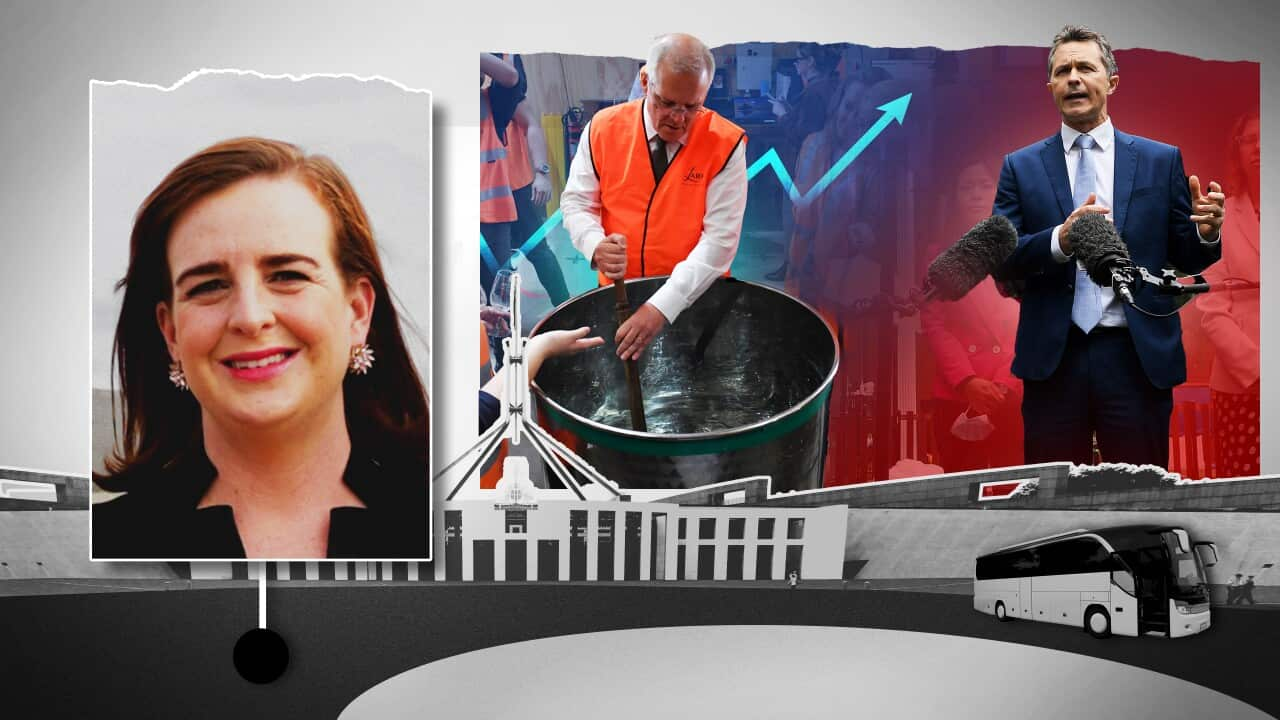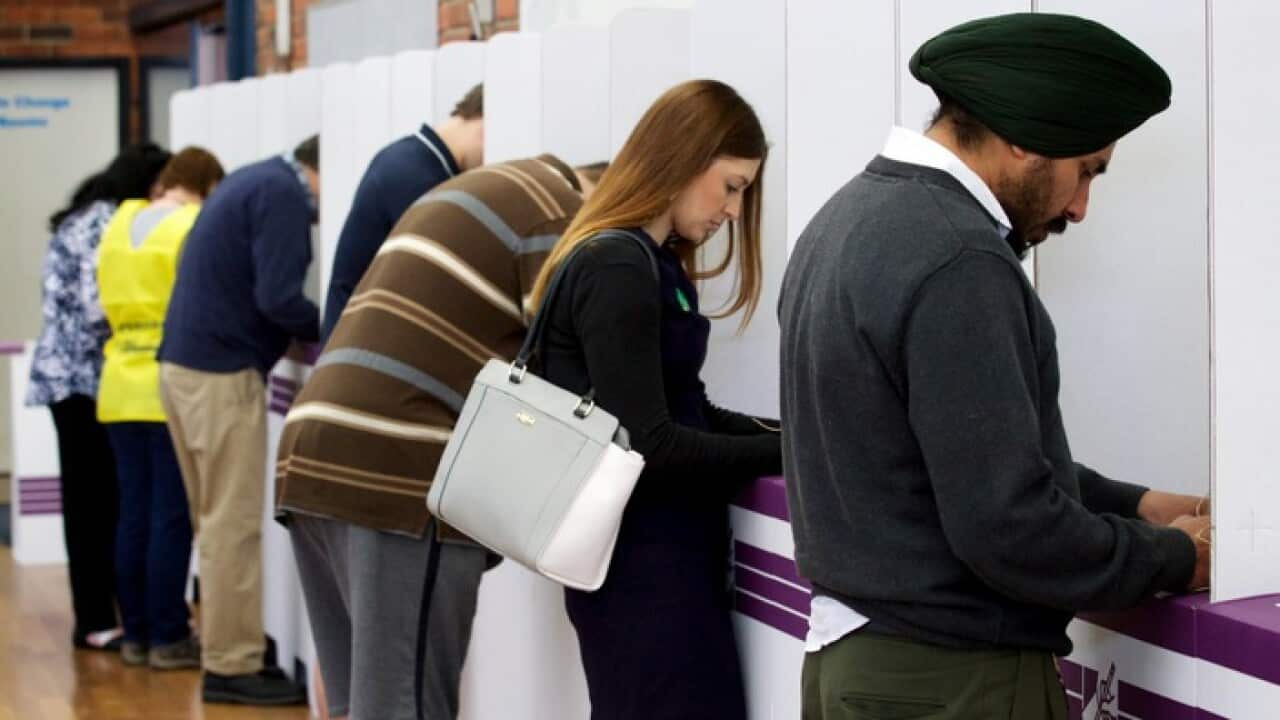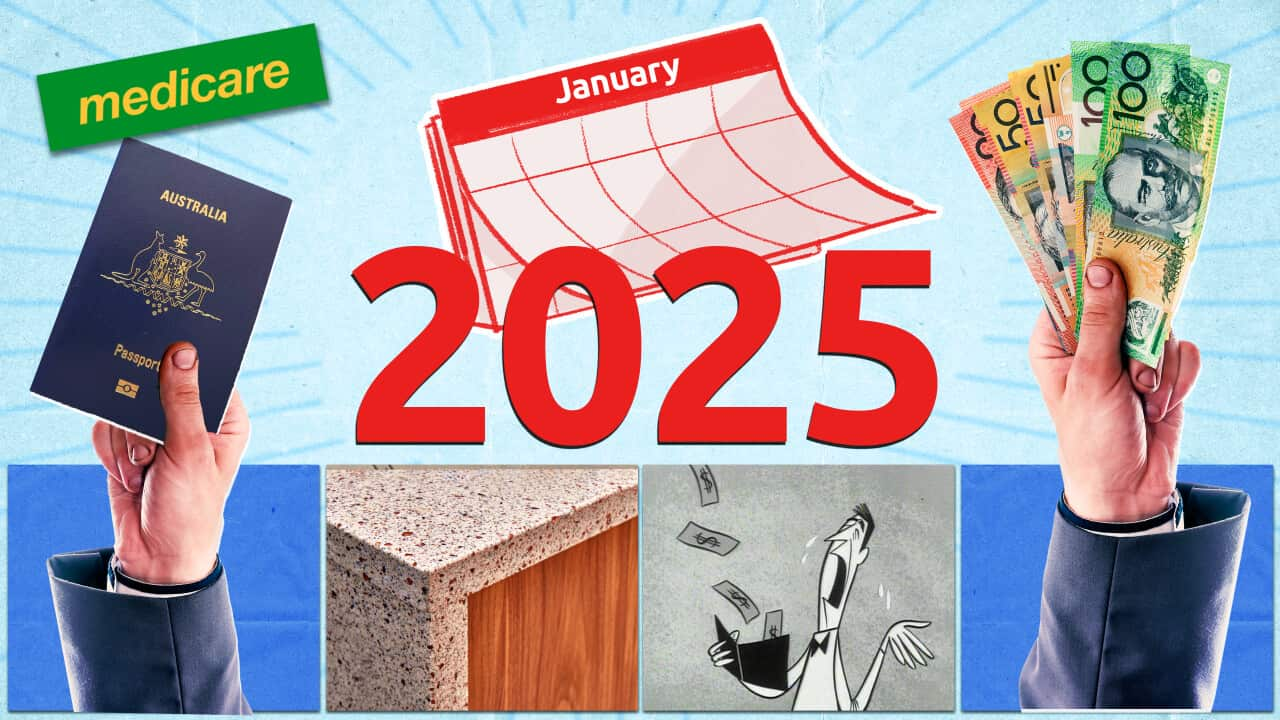Why do they go where they go?
Zigzagging all over the country in six weeks might seem like bizarre behaviour, but the paths of Prime Minister Scott Morrison and Labor leader Anthony Albanese are absolutely deliberate, explains SBS World News Chief Political Correspondent and Canberra Bureau Chief Anna Henderson.
“The campaign is largely a battle over marginal seats, which is why most safe electorates don’t get much love from the leaders,” she says.
“If a seat is held by a margin of less than around six per cent, expect the party leaders to turn up with cameras in tow looking for hands to shake and dogs to pat and armed with a local spending announcement.”
“Australia is a huge country and this election there are seats in play in almost every state and territory so the campaign planes are leaving vapour trails across the skies as they try to reach as many voters as possible,” she says.
That's right, they travel by plane, not bus.
Henderson says the two leaders have been following in each other’s footsteps “sometimes in the same electorate, days or hours apart, or even at the same time”.
But there have been some differences. Morrison has visited more electorates than Albanese and some electorates have been visited on more than one occasion.
“You can also see the Labor leader has spent more time and emphasis on Perth ... where Anthony Albanese held his campaign launch, and the party thinks it can flip multiple seats.”
“The prime minister has been emphasising more regional and suburban electorates across the eastern states, and keeps returning to marginal seats in Tasmania, too.”

Scott Morrison on Day 25 of the campaign in his own electorate of Cooke, in Sydney. Source: AAP / MICK TSIKAS
“Both leaders are also favouring set-piece election events rather than regular forays into the streets where they are more likely to be heckled or face awkward questions,” she adds.
What's it really like on the campaign trail?
Henderson, who has been among the journalists following the prime minister, says both he and his opponent travel with an entourage of “advisors, media spinners and handpicked politicians” who help shape their campaign strategy and provide backup in press conferences.
The media travel separately, with interactions mostly being at prepared events.
“They are divided into set times for press conferences and the so-called ‘pic facs’ [picture facilities] which are pre-arranged events where the leader will turn up at a bakery, factory or street corner with the media pack in tow.”
Henderson says the media is usually given less than half an hour to prepare for arrival at particular locations on the campaign trail.
“The political strategists argue that’s because they want to limit the chances of word getting out to protesters and opponents.”

Anthony Albanese on Day 25 of the campaign in Sydney. Source: AAP / LUKAS COCH/AAPIMAGE
As well the Liberals and Labor, there are other parties running at the election that are also conducting their own campaigns, with the Nationals focusing on regional seats along what’s known as the ‘wombat trail’.
“Minor parties and independents still have election campaigns and conduct significant under-the-radar doorknocking, local debate and online profile-raising ventures,” Henderson says.
“Largely the scope of that is determined by the amount of money they have available to spend, but it can also depend on clever marketing and use of social media which can propel candidates into a better position.”
The was a key moment on this election's campaign trail, Henderson says, as it meant other members of the frontbench took charge while Albanese underwent seven days of isolation.
“It was a period which was less presidential, and some Labor insiders think it actually benefited their campaign”
She says while there were predictions COVID-19 could also curtail media access to the campaign, that has so far not happened.
“But those who have tested positive on the road have been moved straight into isolation wherever they happen to be, which has proved challenging.”
The Australian federal election will take place on 21 May.
Interactive by Ken Macleod. Artwork by Karin Zhou-Zheng, Aaron Hobbs and Leon Wang. Words by Emma Brancatisano.











